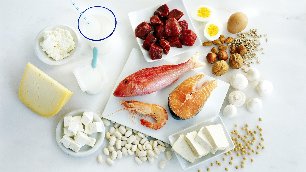
The protein diet is a common nutritional system that helps to cope with excess weight. As the name suggests, this diet is protein-based. At the same time, decrease the amount of fats and carbohydrates. As a result, the metabolic processes in the body change. You have to expend a lot of fat for energy.
Principles of a protein diet
Protein is essential for the body to function properly. Muscle tissues, organs, blood cells, and immune bodies are made from this substance. It is also included in the structure of the skin, hair, nails.
The main functions of proteins include the following:
- Structural.Proteins are considered the foundation for building the body. They are found in bones, hair, skin, and muscles.
- Exchange and enzyme.The basis of hormones and enzymes is pure protein or its combination with other elements.
- Transport.Proteins transport important elements to organs and cells. These include molecules, ions, nutrients. Therefore, hemoglobin carries oxygen to the cells of the body.
Proteins are essential for the proper functioning of the immune system. They provide reliable protection against infection. In addition, these substances support beauty and youth. This is due to the renewal of elastin and collagen fibers.
Protein substances enter the human body from animal feed. It contains many valuable amino acids that the body needs.
Plant proteins do not provide the body with enough amino acids. In addition, they can be combined with other substances. This allows you to get a complete protein.
When there is a lack of protein in the body, metabolic disorders occur. The basic principle of a protein diet is to replenish the body with important substances necessary for its normal functioning. In a normal diet, the amount of protein is usually 12%. During the period of the diet, this indicator increases significantly due to a decrease in the volume of fats and carbohydrates.
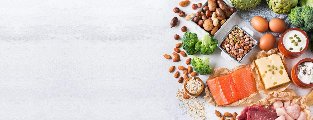
Characteristics of the protein diet
Eating a protein diet is pretty easy. This is due to the possibility of its adaptation to personal preferences and the wishes of a person's taste.
To achieve good results, you must follow the following characteristics of the protein diet:
- Record menu.To do this, you need to start keeping a food diary. This can be done manually or with a special program.
- Find out the protein standard.To do this, you must focus on your body weight.
- Maintain a protein balance.In the menu, you can include products that contain the necessary amino acids.
- Controls the lower limit of the protein norm.Even outside of the diet, the body must receive the necessary amount of protein. The average is 30 years.
- Monitor the biological value of proteins.It is better to give preference to fresh meat, eggs, dairy products. In this case, it is better to avoid processed foods in the form of bacon, sausage, ham.
- Combine protein with herbs and vegetables.The diet should contain a sufficient amount of vegetables, fruits and herbs.
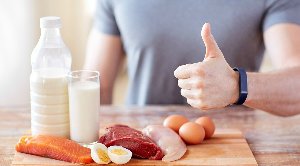
Benefits of a protein diet
The benefits of a protein diet is that it helps not only to lose weight, but also to achieve the following results:
- Increases muscle mass.Combining protein with strength training is considered especially effective.
- Reduces age-related loss of muscle mass.Over the years, many people lose muscle mass. If you include protein shakes in the menu, you can avoid such losses.
- Strengthens the bones.A protein diet helps prevent the development of osteoporosis, which often occurs in women. This food system helps minimize risks by 69%.
- Accelerates wound healing.Eating protein foods normalizes recovery processes after injuries or surgeries.
The harm of a protein diet
The harm of a protein diet is that meat can be high in calories. Therefore, uncontrolled use of protein can lead to weight gain. It is recommended to carefully count calories and avoid exceeding the daily volume.
Severe carbohydrate restriction can be very stressful on the body. Sugar keeps the brain active. If you quit completely, there is a risk of worsening mood and reduced concentration.
Lack of fiber in the diet and increased protein digestion lead to constipation. To minimize stress on the kidneys, you should drink plenty of fluids. Also, vegetables and herbs must be present in the diet.
Other disadvantages of a protein diet include the following:
- Increased load on the kidneys.When a large amount of protein is consumed, the oxidation of its elements, amino acids, causes an increase in the load on the kidneys. In addition, such a feeding system can cause the appearance of stones.
- Threat of metabolic disorders.During the processing of amino acids, by-products are synthesized that prevent the oxidation of fatty acids. In the presence of a large amount of fat in the diet, the body accumulates slightly oxidized substrates. They cause a disruption in the action of insulin and increase the risk of metabolic disorders.
- Lack of vitamins and microelements. This risk is relevant only for rigid diets rich in protein. Therefore, nutritionists do not recommend completely excluding fruits, vegetables and cereals from the diet. If this is not possible, it is worth taking additional vitamins.
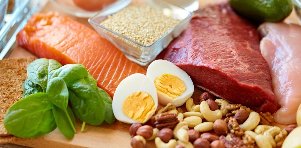
Foods allowed and prohibited in a protein diet
So that a protein diet to lose weight does not harm the body, you should follow these recommendations:
- drink enough fluids - at least 2 liters;
- drink multivitamins;
- consumes at least 1200 Kcal per day.
The list of foods allowed on a protein diet includes:
- lean fish;
- offal;
- poultry without skin - it is better to give preference to chicken, turkey;
- low-fat dairy products;
- seafood;
- veal and veal;
- apples and citrus;
- cucumbers, tomatoes, cabbage;
- cereals;
- egg whites;
- mineral water, tea and coffee without added sugar.
The foods that are prohibited in a protein diet are:
- baked goods;
- sweets;
- canned food;
- fatty dairy products;
- semi-finished products;
- sweet fruits;
- fruit juices, carbonated sweet drinks;
- starchy vegetables;
- compotes;
- sugar and its analogues.
The way food is prepared is also important. It must be steamed, boiled, baked. Do not fry food in oil or pour over fatty sauces. To improve the taste of dishes, it is allowed to use herbs, salt, soy sauce, pepper. You can also use lemon juice and balsamic vinegar.
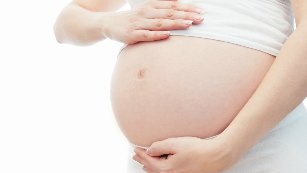
Protein diet for pregnant women
During pregnancy, the need for protein foods increases significantly. Most amino acids are used up in the development of the child. Many people are sure that such a nutritional system involves only serious restrictions. However, a protein diet for pregnant women means regulating these substances in the diet.
During the gestation period, it is recommended to ingest up to 2-2. 5 g of protein products per 1 kg of body weight. This means that the daily rate should be around 100-120 g.
At the same time, other foods must certainly be present in the diet. Fat and carbohydrates must be eaten. They are necessary for the full development of the child. In this case, it is worth giving up sugar, bread, baked goods.
Each meal should only include 1 serving of protein foods. With an excessive amount of these substances, there is a risk of overloading the body with their decomposition products. This significantly increases the load on the liver and kidneys.
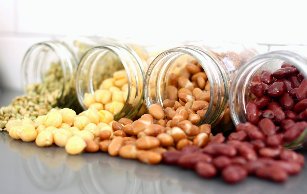
Contraindications of the protein diet
The protein diet has contraindications in such situations:
- is over 45 years old;
- tendency to form blood clots;
- kidney disease;
- pregnancy;
- breastfeeding.
Protein diet to lose weight: menu of the week
The protein diet to lose weight includes the following menu for the week.
Day 1
- Breakfast:can consist of cottage cheese or unpolished rice with chicken, tea or coffee can also be enjoyed.
- Second breakfast:you can eat an apple.
- Lunch:You can eat boiled breast with a slice of whole wheat bread.
- Snack:a little plain yogurt.
- Dinner:can include chicken or fish with vegetable salad.
Day 2
- Breakfast:It is worth eating yogurt and drinking tea.
- Second breakfast:Have a couple of sugar-free cheesecakes or an orange.
- Lunch:you can eat beef or turkey. Steamed vegetables are suitable as a garnish.
- Afternoon snack:you can drink kefir.
- Dinner:Eat baked fish with vegetables.
Day 3
- Breakfast: It is worth eating 3 proteins or cottage cheese. For drinks, tea or coffee is suitable.
- Lunch:Any fruit can be used except banana.
- Lunch:you need to make meat soup. A turkey with unpolished cooked rice will also work.
- Snack:eat an apple.
- Dinner:Coleslaw and beef are worth eating.
Day 4
- Breakfast:can consist of buckwheat porridge with milk.
- Lunch:may include grapefruit.
- Lunch:asparagus and chicken fillets are worth eating.
- Afternoon snack:You should drink a glass of fermented baked milk.
- Dinner:can include vegetables and boiled fish.
Day 5
- Breakfast:Eat boiled chicken with cucumber and cabbage salad.
- Lunch:can consist of an apple and an orange.
- Lunch:It is worth eating fish or steamed vegetable soup.
- Snack:can include plain yogurt.
- Dinner:Meat and vegetable salad is fine.
Day 6
- Breakfast:It is worth eating a protein omelette and having tea or coffee.
- Lunch:Any citrus fruit will do.
- Lunch:you can eat beef or chicken fillet and vegetables.
- Snack:a glass of kefir is worth drinking.
- Dinner:can consist of baked fish and salad.
Day 7
- Breakfast:is worth eating cottage cheese. It is also allowed to drink tea or coffee.
- Second breakfast:you can eat an apple.
- Lunch:You can eat boiled meat and vegetable soup.
- Snack:cottage cheese.
- Dinner:may consist of chicken and vegetable salad.
Subject to such a nutrition system, there should be 4-6 meals per day. The first meal should be half an hour after getting up. You need to have dinner 3 hours before going to bed. During the day, it is worth drinking 1. 5 liters of water.
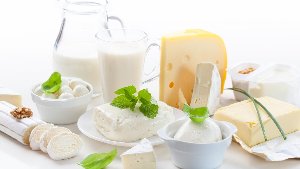
Protein diet for 14 days: menu
If you are planning a protein diet to lose weight for 14 days, you should focus on the following menu:
- Food should be eaten 5 to 6 times a day. The first time it is recommended to do it half an hour after getting up, the last, 3 hours before going to bed. Carbohydrates can be consumed until 2 pm.
- Breakfast can include a serving of complex carbohydrates. This will require 4 tablespoons of boiled cereals: oatmeal, buckwheat, brown rice. A slice of whole wheat bread is also okay. Also, eat some protein: 100 g of boiled steak, 30 g of walnuts, 1 egg, yogurt.
- In the morning, you should eat fruit as a snack. Apples, tangerines, or oranges are excellent options.
- In the afternoon, protein foods should be combined with non-starchy vegetables. These include tomatoes, cucumbers, lettuce, cabbage.
- It is recommended to season salads with 30 g of vegetable fats. The rest of the food is prepared without oil.
Protein diet recipes
For this nutritional system to be beneficial, recipes for protein diets must be tasty and varied.
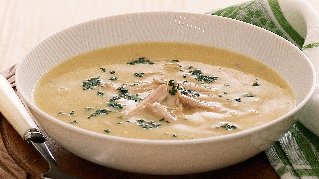
Egg cream
This plate will require:
- 300 g of spinach;
- 400 g of chicken fillet;
- 2 eggs;
- 150 ml of milk;
- spices, salt, parsley.
Preparation:
- First, boil the meat in 2 liters of water.
- Then take it out and cut it into cubes.
- Add the chopped spinach to the broth and cook until just tender.
- Pour the soup into a blender, add the milk, meat and eggs and beat until creamy.
- When serving, garnish with parsley and boiled egg.
Protein salad
To cook you need:
- 3 eggs;
- 400 g of Chinese cabbage;
- 1 chicken fillet;
- 1 cucumber.
To refuel:
- salt;
- plain yogurt;
- mustard.
Preparation:
- Grind all the ingredients.
- Mix the ingredients for the dressing in a separate bowl.
- Pour the mixture into the salad and mix well.
- Sprinkle the protein salad with lemon juice before serving.
Protein ice cream
To cook you need:
- 1 package of low-fat cottage cheese;
- half an orange;
- 1 apple;
- vanilla.
Preparation:
- Cut the orange and apple into wedges.
- Mix the fruit with the curd.
- Add a little vanilla and beat until smooth.
- Put in the freezer for 30 minutes. The finished dessert tastes like popsicles.
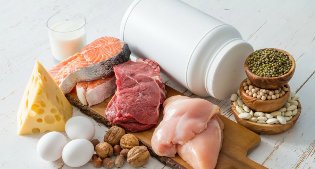
Stop a protein diet
To record the results obtained, it is necessary to properly exit the protein diet.
To do this, it is recommended to observe the following rules:
- Avoid sweets and heavy foods within 2 weeks of ending the diet. In this case, preference should be given to light meals. If sweets are difficult to do without, you can add a tablespoon of honey to oatmeal.
- Drink unsweetened tea. You need cereals and low-fat dairy products.
- Veggies and lean meats are recommended for lunch. Fish, beef, chicken will be excellent options. You can also eat various stews. Fruit is also useful. Drinks include green or herbal teas. Eggs are great.
- Dinner can be quite light. A vegetable salad with a hard-boiled egg or a piece of meat is a good option. If you feel intense hunger before going to bed, you should drink 250 ml of low fat kefir.
- Of the sweets, honey and fruits should be preferred. Yogurt is also acceptable. In any case, these products should be consumed in the morning.
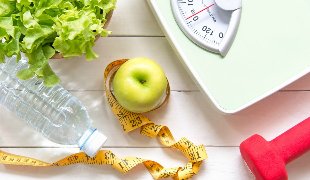
Protein diet: nutritionist reviews
Nutritionist reviews of the protein diet for weight loss are positive:
- “The main benefit of this diet is the feeling of fullness it provides. At the same time, protein foods quickly shed excess weight. Disadvantages include the risk of loss of skin elasticity and impaired kidney function. "
- “Any dietary restriction should be taken very seriously. The diet should not completely exclude vegetables and fruits. Only in this case will it be possible to lose weight without damaging health ".
Protein Diet is a popular nutritional system that helps shed excess weight and fills the body with vital energy. To achieve good results and avoid negative consequences, it is necessary to strictly adhere to the recommendations of nutritionists. Before following the diet, be sure to read the list of contraindications.































